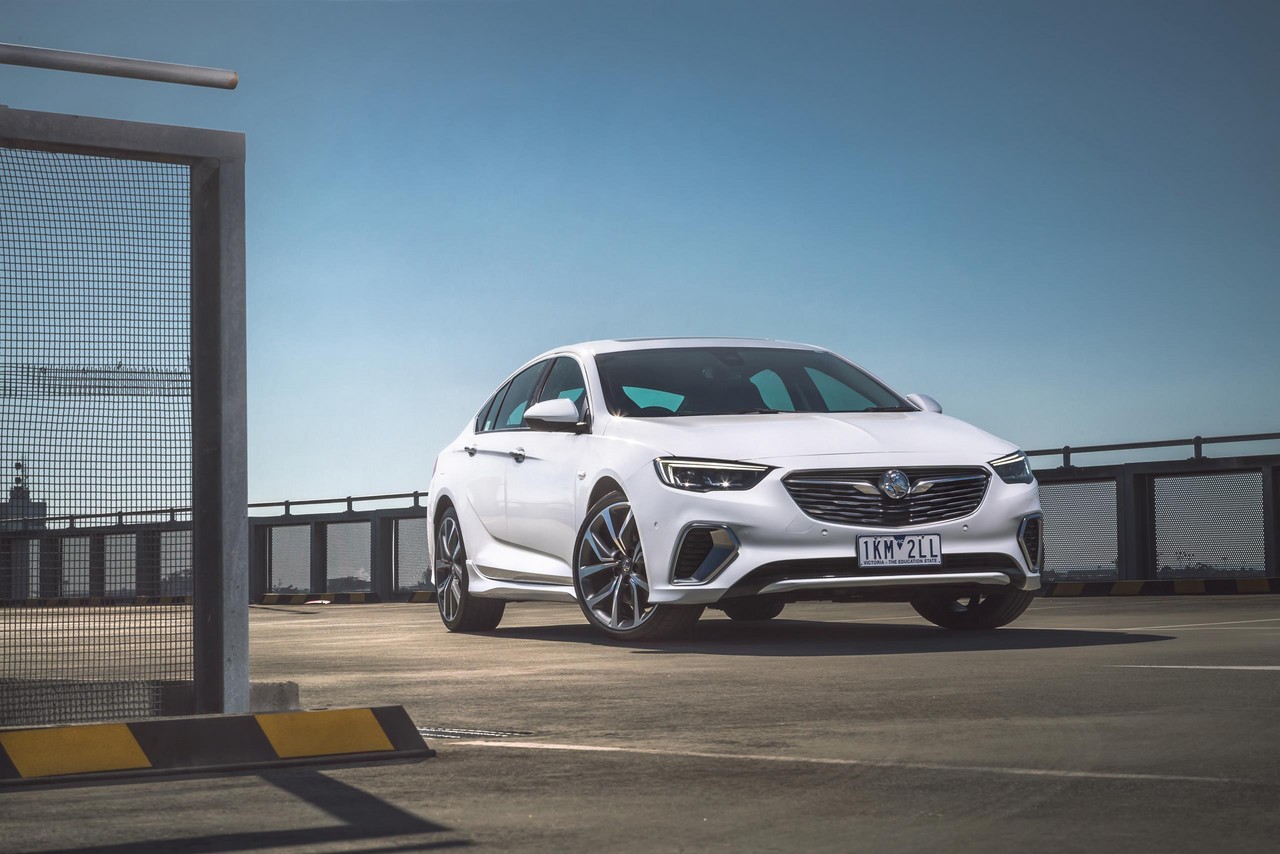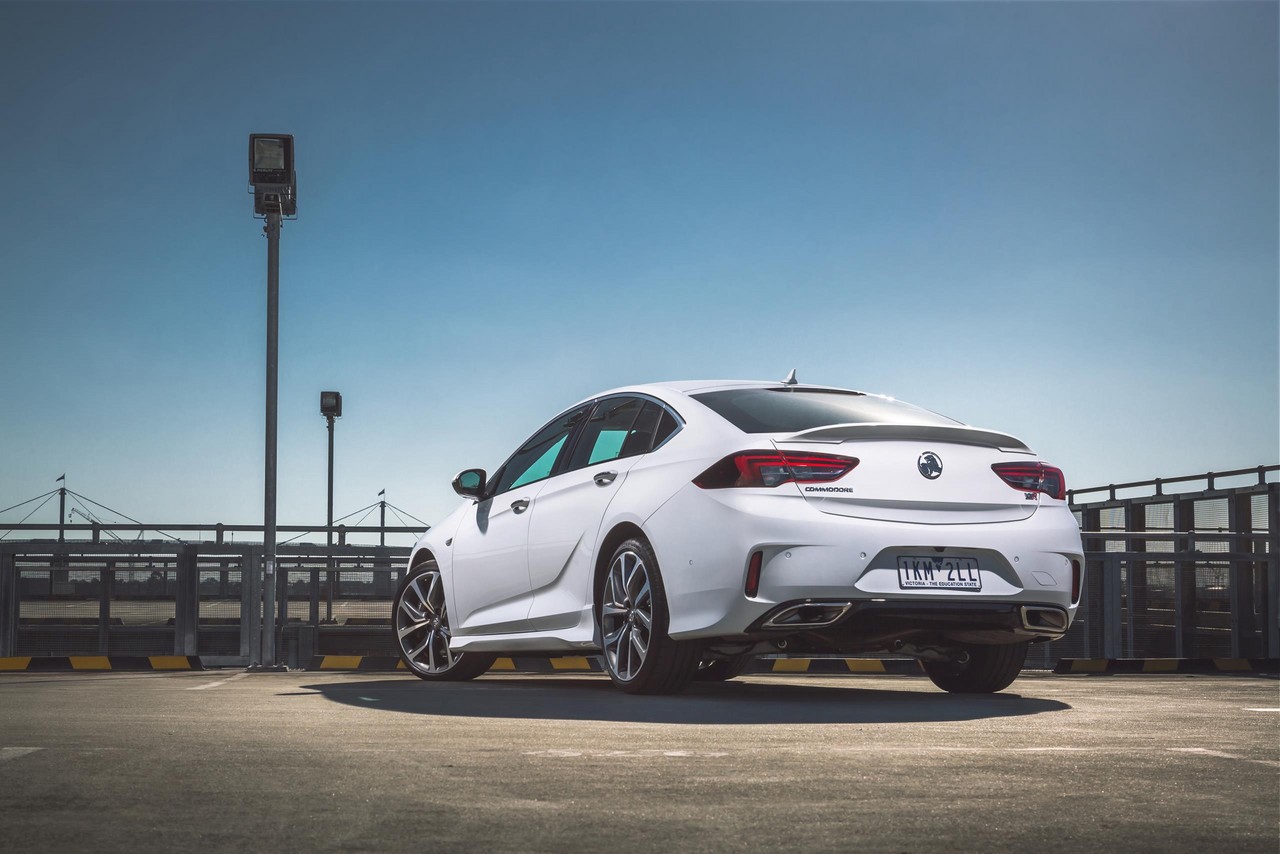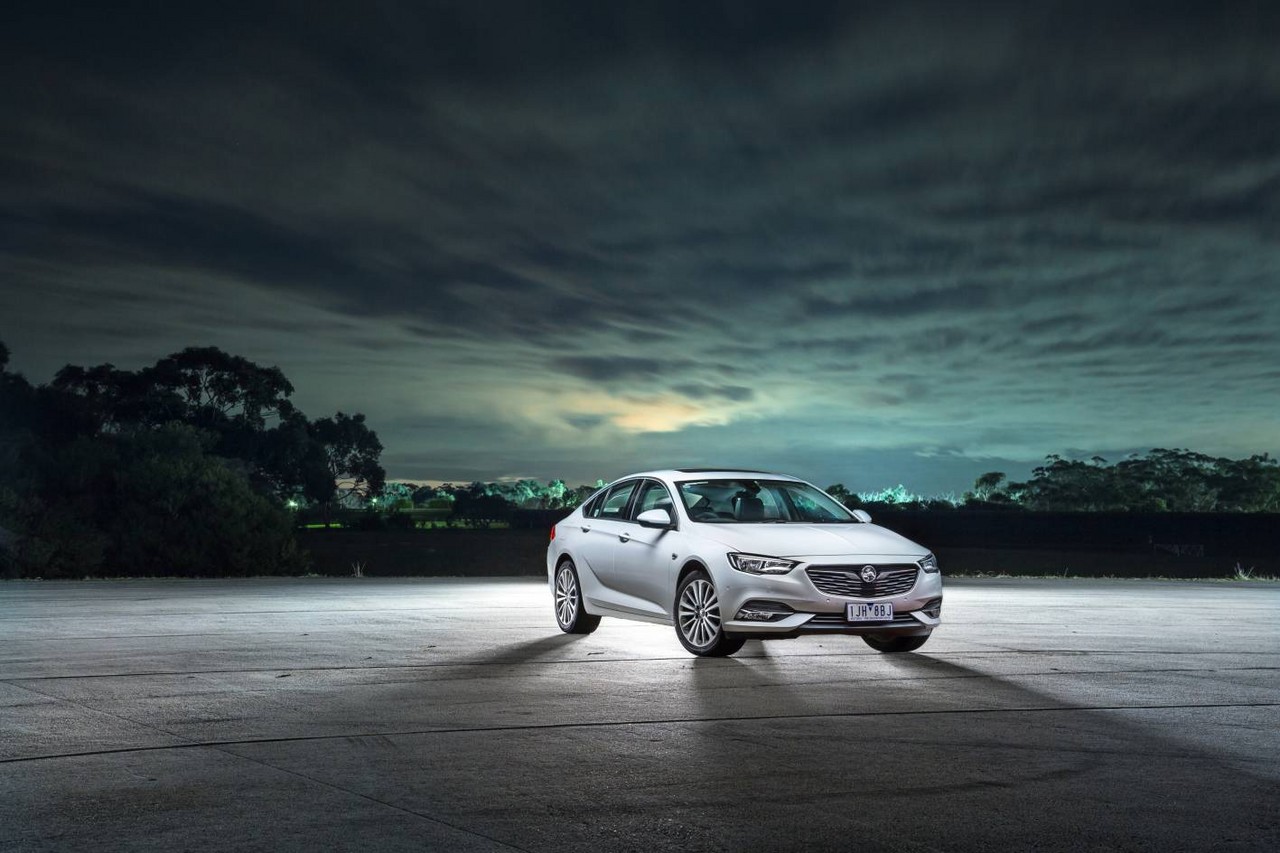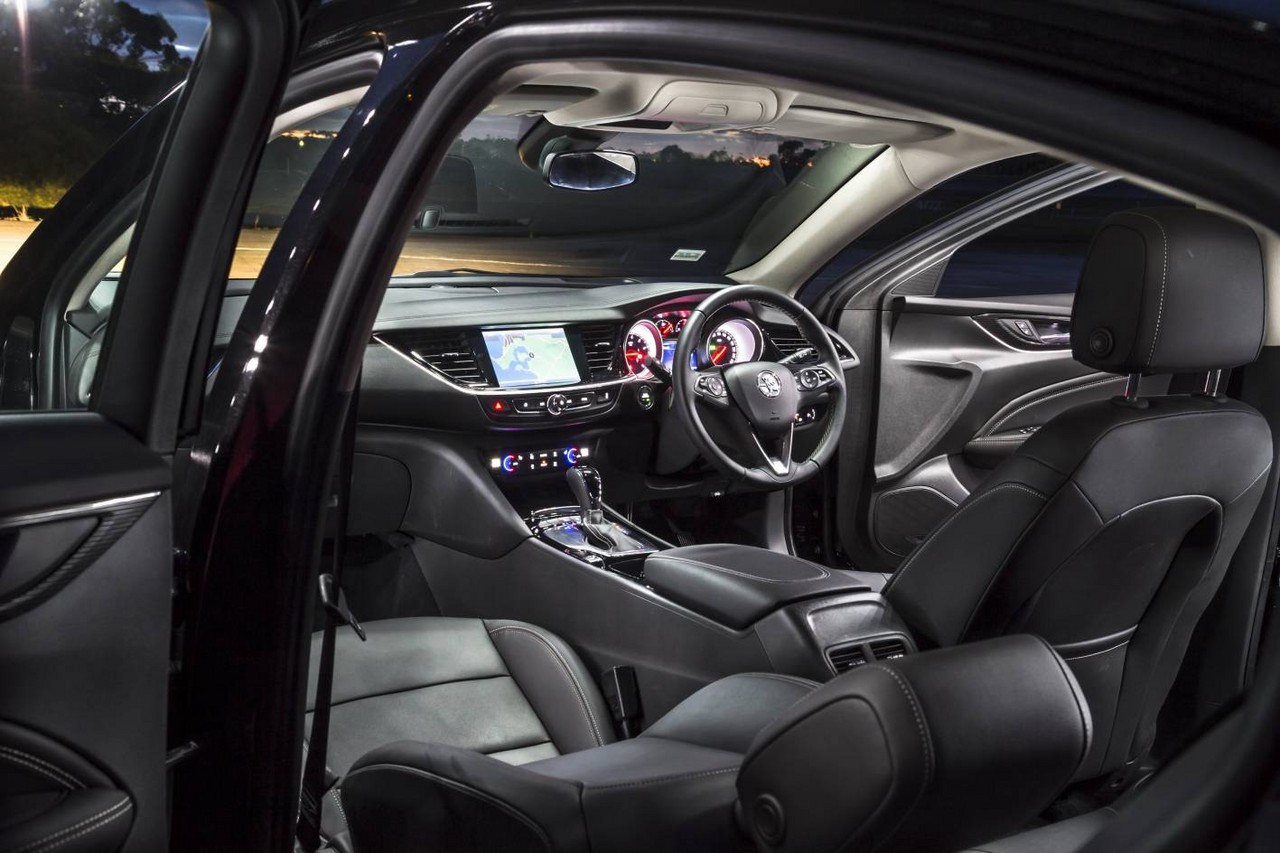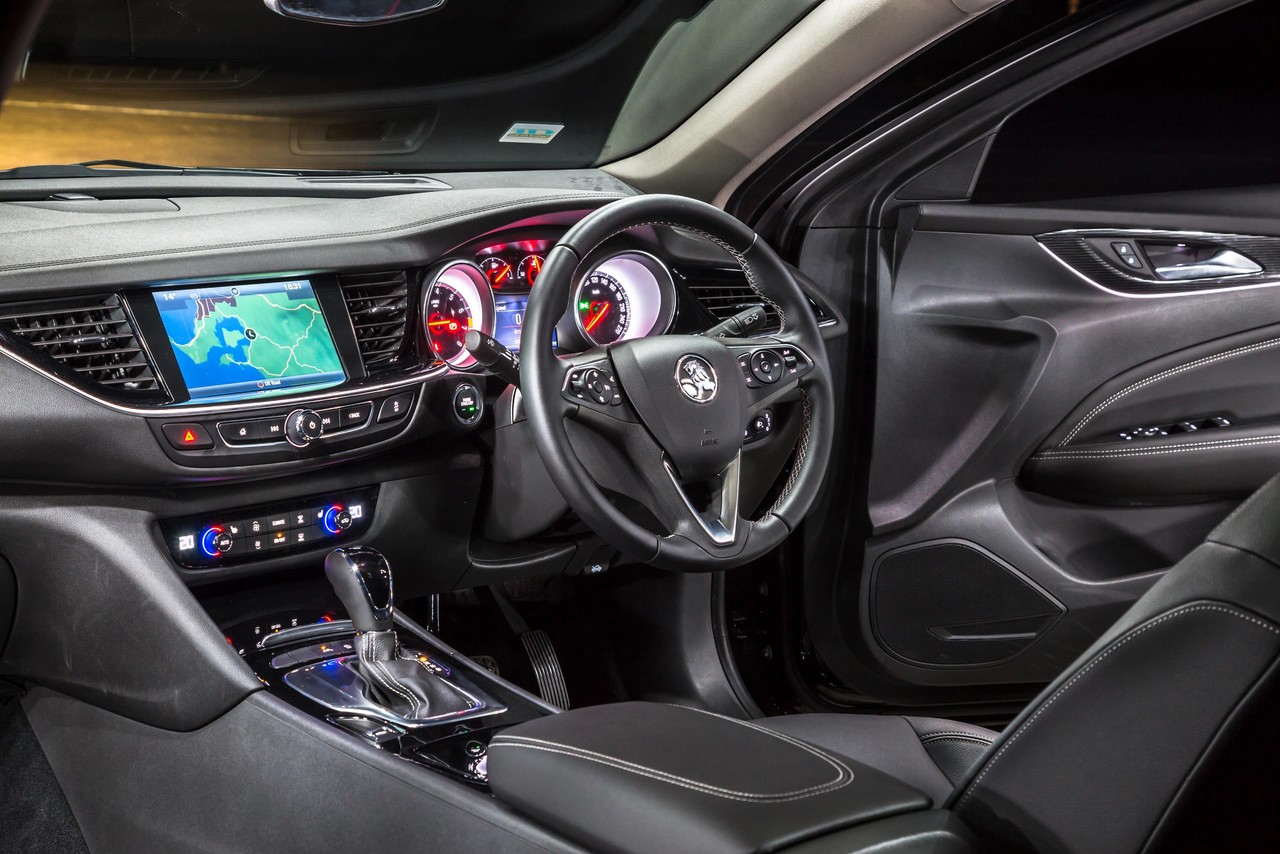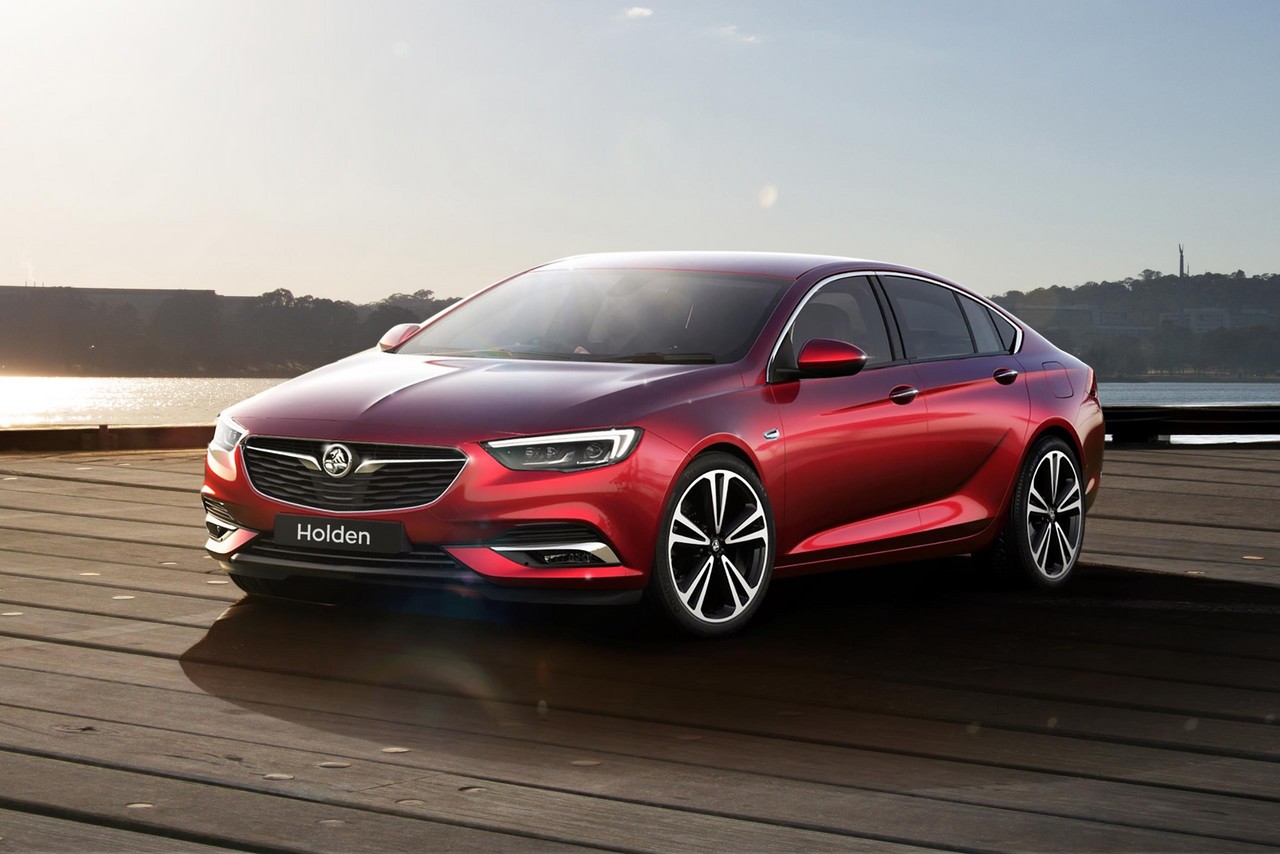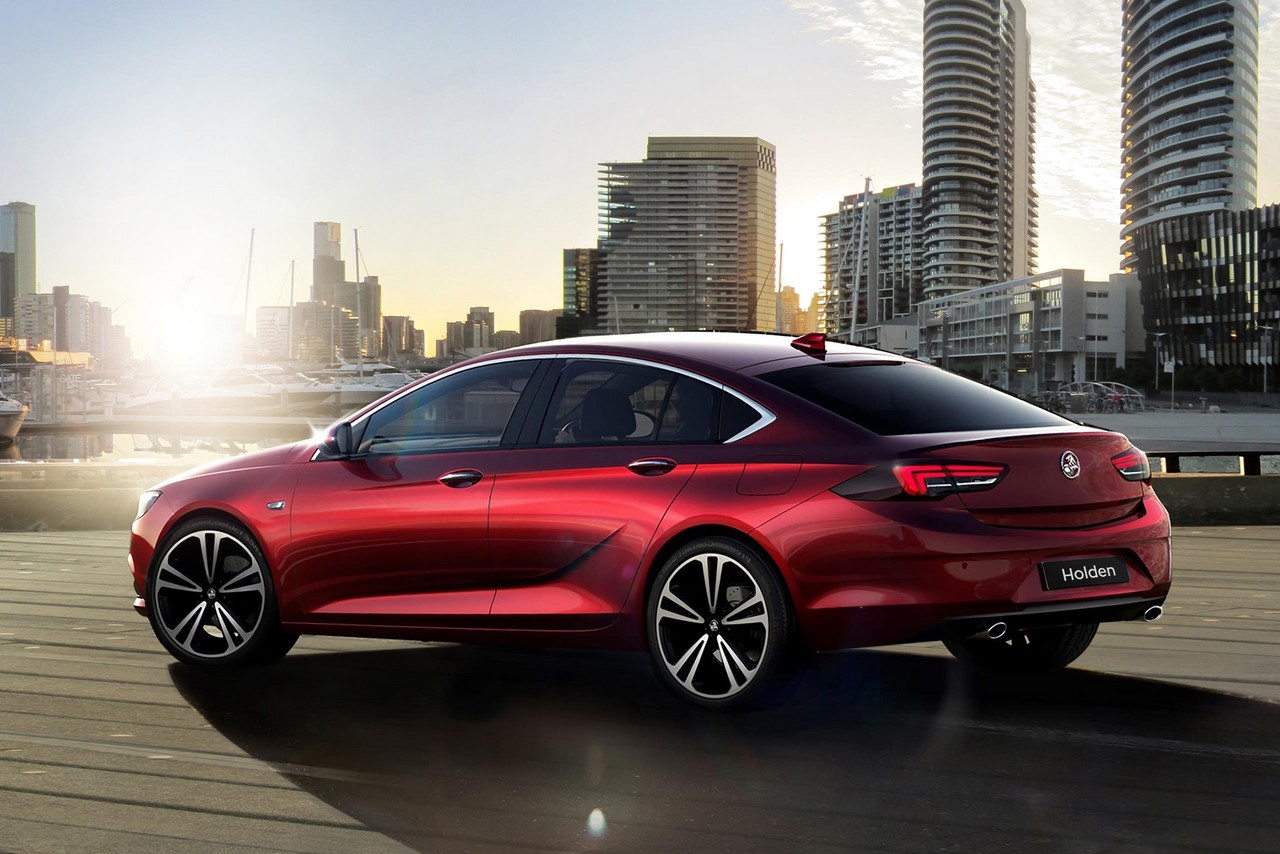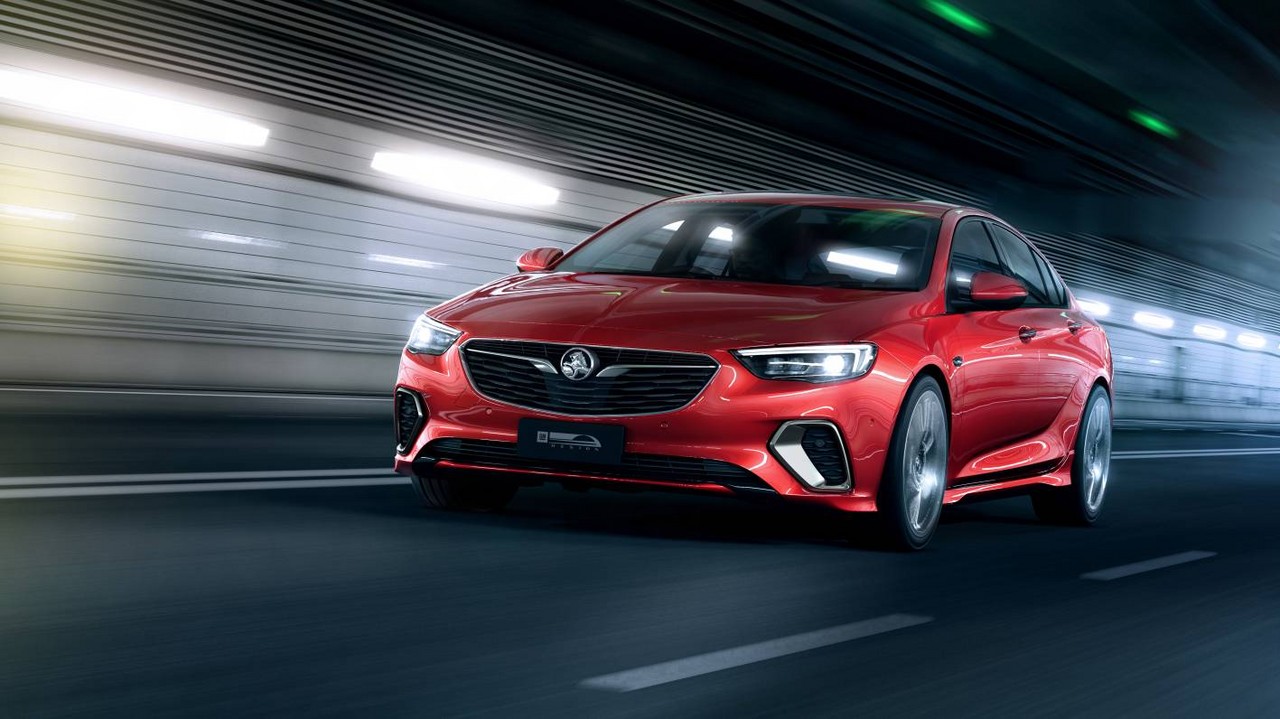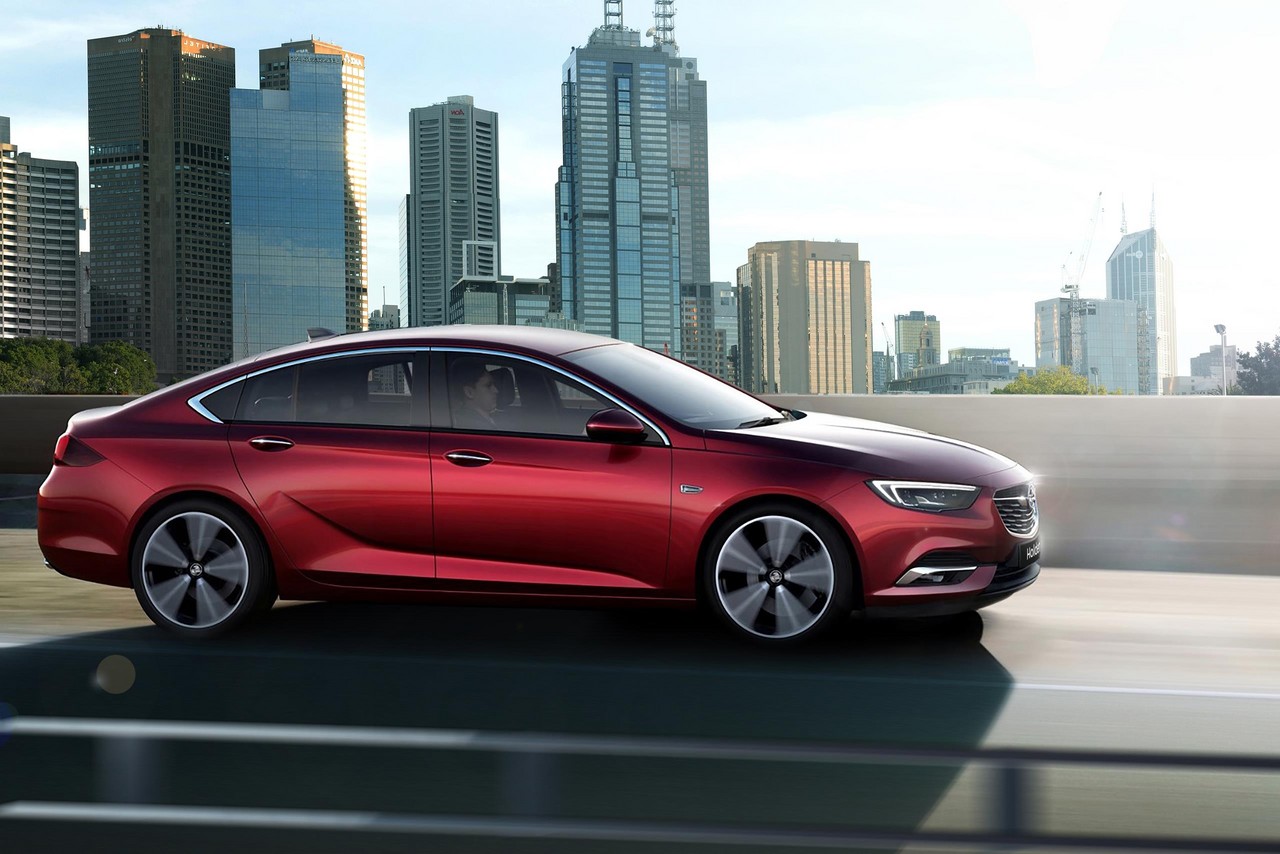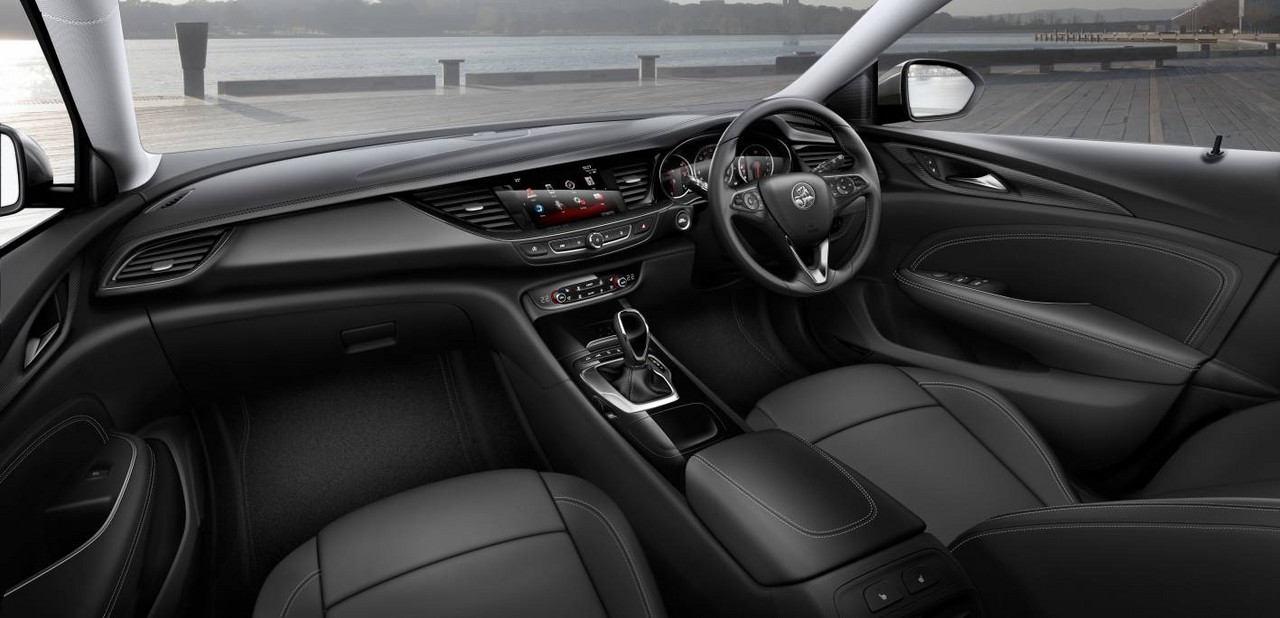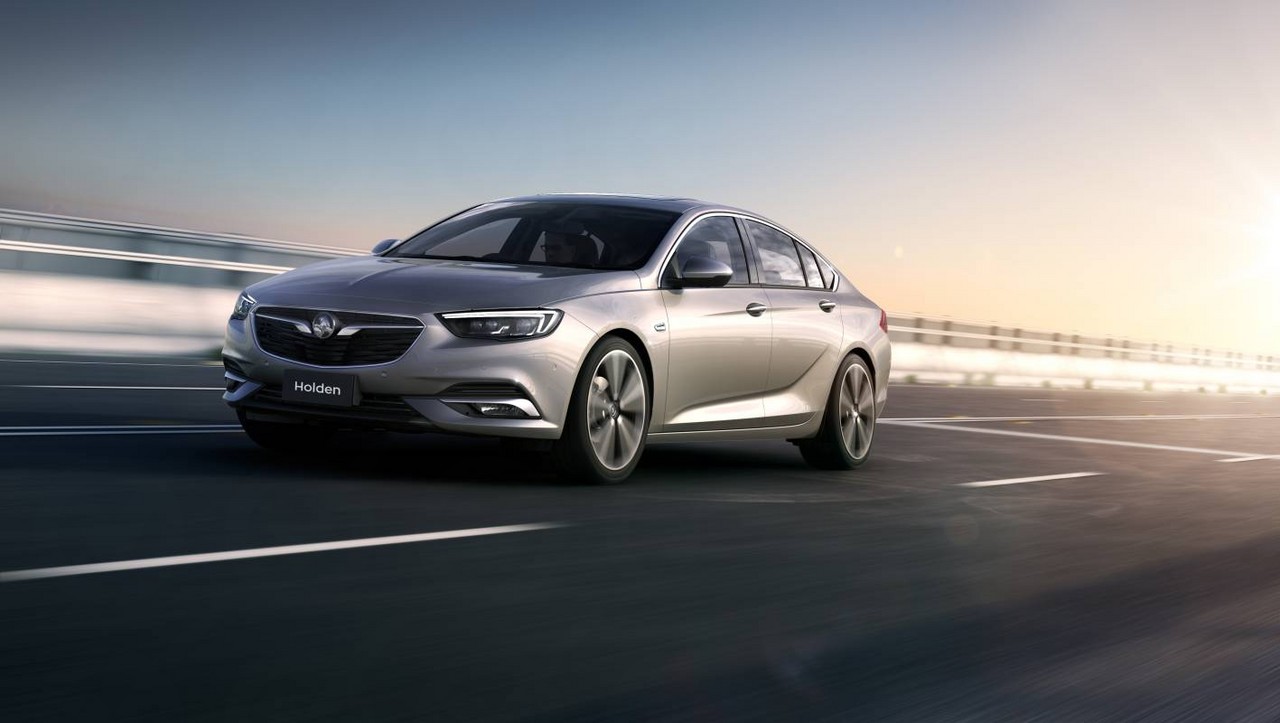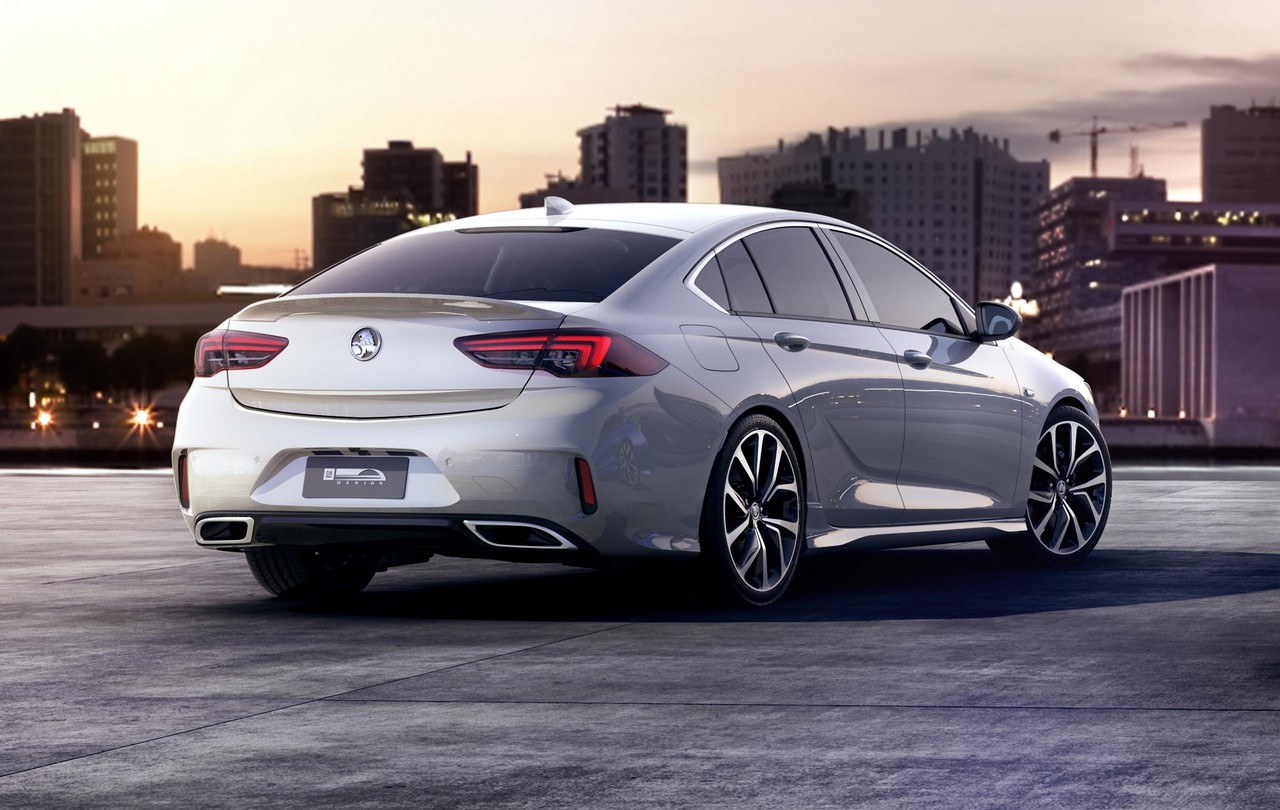
- Fuel-efficient 2.0-litre turbo petrol and diesel engines
- Underpinned by lighter E2XX platform
- For V6 models, GKN Driveline’s AWD system fitted as standard
- Transversely mounted engines, no sedan or ute bodies, no rear-wheel drive and no V8 engines. This is a mid-size Opel Insignia Grand Sport masquerading as a Holden Commodore. Regardless of whether it’s better or worse, it’s not a Commodore
Overview
Released in February 2018, the Holden ZB Commodore was available as a mid-size liftback or wagon (the Sportback and Sportwagon, respectively). Manufactured by Adam Opel AG in Russelsheim, Germany, the 2018 Holden Commodore was initially available with three engines:
- A 2.0-litre turbocharged petrol engine (front-wheel drive);
- A 2.0-litre turbo diesel engine (front-wheel drive); and,
- A 3.6-litre naturally aspirated V6 petrol engine with GKN Driveline’s AWD system (described below). For the ZB Commodore, the ‘LGX’ V6 engine featured General Motors’ ‘Active Fuel Management’ system which enabled one cylinder on each bank to shut down when coasting or under light throttle loads to run as a V4 and reduce fuel consumption.
All engines had Stop/Start systems which enabled them to shut down when the vehicle was stationary in traffic.
Beyond the engines, the ZB Commodore range consisted of LT, RS, RS-V, VXR, Calais and Calais V variants.
| Variant | Engine | Trans. | Peak power | Peak torque | |
|---|---|---|---|---|---|
| 2.0 Turbo FWD | LT, RS, Calais (lift back only) |
1998 cc LTG/B20NFT turbo petrol I4 | 9sp auto | 191 kW at 5300 rpm | 350 Nm at 3000-4000 rpm |
| 2.0 Diesel FWD | LT, Calais (lift back only) |
1956 cc LFS/B20DTH turbo diesel I4 | 8sp auto | 125 kW at 3750 rpm | 400 Nm at 1750-2500 rpm |
| 3.6 V6 AWD | RS, RS-V, Calais-V (lift back only), VXR (lift back only) |
3649 cc LGX petrol V6 | 9sp auto | 235 kW at 6800 rpm | 381 Nm at 5200 rpm |
Body and dimensions
The Holden ZB Commodore was underpinned by General Motors’ E2XX platform, the successor to the Epilson II platform upon which the Opel Insignia and Holden Insignia VXR were based. Since engines for the E2XX platform were transversely mounted, the ZB Commodore will not be offered with a V8 engine.
Compared to the VF Commodore , the Holden ZB Commodore liftback was 72 mm shorter (at 4897 mm), 36 mm narrower (1863 mm), 16 mm lower (1455 mm) and had an 86 mm shorter wheelbase (2829 mm). Furthermore, the ZB Commodore liftback had a drag coefficient of 0.26 Cd. Relative to the ZB Commodore liftback, the ZB Commodore Sportwagon was 1 mm shorter (at 4986 mm) and 28 mm taller (1483 mm), though width and wheelbase length were unchanged.
Tare weights for the ZB Commodore ranged from 1477 kg (Sportback LT 2.0T) to 1730 kg (Sportwagon Calais-V V6). To reduce weight, the ZB Commodore had an aluminium bonnet.
‘Twinster’ AWD system by GKN Driveline
The Holden ZB Commodore V6 had a pro-active all-wheel drive system produced by GKN Driveline. The all-wheel drive system consisted of:
- A Power Transfer Unit (PTU) located at the front differential. The PTU operated at all times and monitored inputs from sensors 100 times per second to determine when to transfer torque to the rear axle. The PTU was engaged by an Electromagnetic Control Device (EMCD) and could engage in 300 ms (i.e. 0.3 seconds). Specifically, the EMCD generated a magnetic field that was used to control the clutch torque by adjusting the amount of current delivered to it (based on vehicle inputs and a dedicated control algorithm) – this provided the system with pro-active behaviour, i.e. the ability to anticipate when AWD may be needed, rather than responding to a loss of traction;
- Prop shafts that extended from the PTU to an electronic control unit that was positioned just ahead of the rear axle; and,
- A ‘Twinster’ rear drive module in place of the rear differential. The ‘Twinster’ Rear Drive Module (RDM) consisted of two electronically-controlled wet clutches that were actuated hydraulically. The Twinster RDM provided fully variable torque distribution for the rear wheels, i.e. 100 per cent of rear axle torque could be directed to either rear wheel.
In straight-ahead cruising, the ‘Twinster’ rear clutches were open and all of the engine’s torque was directed to the front wheels. As the vehicle entered a corner, however, the PTU would engage to direct up to 50 per cent of the engine’s torque to the rear wheels (i.e. a 50:50 front:rear torque distribution). Furthermore,
- Different gearing ratios in the PTU and Rear Drive Module (RDM) caused the rear wheels to drive faster than the front wheels; and,
- The RDM operated in response to software algorithms to allocate torque to each rear wheel. If cornering to the driver’s right, for example, the clutches would send more torque to the back left wheel to generate yaw in the direction of the corner apex (i.e. torque vectoring). In contrast to Haldex systems, the torque vectoring effect was achieved by apportioning torque between the rear wheels rather than by applying the brakes to the inner wheels.
The AWD system also had a ‘Sport’ mode that provided more aggressive torque vectoring.
Suspension and steering
The Holden ZB Commodore models with 2.0-litre turbocharged petrol or diesel engines had MacPherson strut front suspension and independent, four-link rear suspension. ZB Commodore models with 3.6-litre V6 engines, however, had ‘HiPerStrut’ front suspension and independent, five-link rear suspension. Compared to conventional MacPherson strut front suspension, HiPerStruts reduced kingpin inclination and shortened spindle length (kingpin offset) with a reduced lever arm. By reducing kingpin inclination, less camber loss was experienced while cornering, while torque steer reactions were also reduced.
As standard, the Commodore VXR was equipped with General Motors’ ‘FlexRide’ adaptive suspension which consisted of electronically controlled dampers. Using sensors to measure acceleration, braking and cornering, the FlexRide adjusted damping forces according to the driving situation. It is understood that the driver could also select from Standard, Sport or Tour settings.
The Holden ZB Commodore had rack-and-pinion steering with electric power assistance; its minimum turning circle was 11.14 metres.
Safety equipment
Standard safety equipment for the Holden ZB Commodore included dual front airbags, front seat-mounted side airbags, full-length curtain airbags, ABS, electronic brake force distribution, brake assist, electronic stability control, traction control, front seatbelts with pre-tensioners and load limiters, and a driver’s lap belt pre-tensioner.
As standard, the Holden ZB Commodore was equipped with a ‘Holden Eye’ forward facing camera and the following driver assistance systems:
- Forward Collision Alert with Pedestrian Detection and Head-Up Warning: operating at speeds above 8 km/h, the driver would be warned by an audible alarm, visual warning in the instrument cluster and projection onto the windscreen if the distance to a vehicle or pedestrian that was in front of the ZB Commodore decreased rapidly;
- Autonomous Emergency Braking (AEB): operating at speeds from 8 km/h to 80 km/h (for the Commodore LT, Calais, RS and RS-V), autonomous emergency braking would be initiated if the distance to an objected ahead decreased such that there was a collision risk. At initial speeds up to 40 km/h, the vehicle could be brought to rest. At initial speeds from 40 km/h to 80 km/h, vehicle speed would be reduced. AustralianCar.Reviews understands that the ‘low speed’ AEB system for the Commodore LT, Calais, RS and RS-V operated at speeds up to 80 km/h, while the ‘all speed’ AEB system for the Calais V and VXR did not have a maximum speed threshold;
- Lane Departure Warning (LDW): if the vehicle drifted out of its lane without the driver having applied the indicator/turn signal, LDW would sound a warning tone;
- Lane Keep Assist: provided gentle steering wheel movements to return the vehicle to its lane if it was drifting out of it; and,
- Following Distance Indicator (FDI): used the front sensors to display the following time to the vehicle ahead. Displayed in the instrument cluster, FDI could provide a minimum following time of 0.5 seconds.
The Commodore RS, RS-V, Calais, Calais V and VXR were further equipped with:
- Side Blind-Zone Alert: used ultrasonic sensors to scan wide areas around the vehicle at speeds above 10 km/h. If an object was detected in the driver’s blind spot, an optical amber-coloured warning would appear in the relevant door mirror. Furthermore, if the turn indicator was applied towards the direction of the object in the blind spot, the optical LED warning would start flashing; and,
- Rear Cross Traffic Alert: used radar sensors in the rear bumper to detect objects approaching from up to 20 metres away at 90 degree angles to the left or right of the vehicle.
Unique within the range, the Holden ZB Commodore VXR and Calais-V were equipped with Adaptive Cruise Control (ACC). When cruise control was active, ACC could provide automated braking to maintain a safe distance from the vehicle ahead; ACC could also initiate automatic emergency braking if the distance decreased abruptly. When there was sufficient space ahead, the vehicle would then accelerate back up to its cruising speed.
Euro NCAP testing
In Euro NCAP testing , the equivalent 2017 Opel/Vauxhall Insignia liftback received a five star safety rating which included a 93 per cent adult occupant protection rating and an 85 per cent child occupant protection rating. In the frontal offset test, protection of the driver’s head, neck, thighs, feet and lower left leg were rated as good, though protection of the chest and lower right leg were rated as adequate (i.e. a slight risk of serious injury); for the front passenger, chest protection was also rated as adequate. Maximum points, however, were awarded in the side and pole impact tests.
Brakes
The Holden ZB Commodore was offered with three braking packages –
- Models with 2.0-litre engines had 300 mm by 26 mm ventilated front brake discs and 288 mm by 12 mm solid rear discs;
- Models with V6 engines had 321 mm by 28 mm ventilated front brake discs and 315 mm by 23 mm ventilated rear discs; and,
- The Commodore VXR had larger 345 mm by 30 mm ventilated front brake discs with four-piston Brembo callipers.
Features: Holden Commodore LT
As standard, the Holden Commodore LT was equipped with a ‘MyLink’ infotainment system which featured a seven-inch high-resolution colour touch screen, Bluetooth mobile phone connectivity and audio streaming, Apple CarPlay and Android Auto smartphone integration, iPod integration including Siri Eyes Free, a front USB port and dual rear USB charge points.
Beyond this, standard features for the Commodore LT included 17-inch alloy wheels (with a space-saver spare wheel and tyre), a seven speaker sound system, ‘Jet Black’ cloth seat trim, an eight-way power adjustable driver’s seat, dual-zone climate control air conditioning, cruise control, halogen headlights with dusk-sensing function, LED daytime running lights, rain-sensing wipers, front and rear parking sensors, a rear view camera, a leather-wrapped steering wheel, 60/40 folding rear seats, remote central locking with proximity key (i.e. keyless entry), power adjustable and heated door mirrors, power windows, tilt and telescopic steering wheel adjustment, push-button and remote starting, illuminated vanity mirrors, an electric park brake, 3.5-inch ‘Driver Information Display’ with trip computer and an immobiliser. Commodore Sportwagon models were also fitted with a rear cargo blind and roof rails.
As standard, the ZB Commodore was equipped with ‘Advanced Park Assist’. Active at speeds below 11 km/h, Advanced Park Assist used ultrasound sensors on the front and rear bumpers to identify suitable parking space and detect possible obstacles. Once the parking spot was identified, the system could provide automated steering for the parking manoeuvre while the driver controlled vehicle speed. Advanced Park Assist could also display the relative position and distance of detected objects to the vehicle, while an acoustic signal indicated the relative distance of the objects (by increasing its frequency for closer objects).
Features: Holden Commodore RS and RS-V
Compared to the Commodore LT, the Commodore RS was further equipped with 18-inch alloy wheels, ‘Sportec’ seat trim, an eight-way power adjustable driver’s seat (as per the LT) with four-way powered lumbar adjustment, a leather ‘sports’ steering wheel, power folding door mirrors and ambient interior lighting. The Commodore RS Sportwagon was also equipped with power-operated tailgate that had hands-free operation (i.e. could open in response to foot movements beneath the rear bumper). Visually, the Commodore RS could be identified by its sports body kit and, for liftback models, rear lip spoiler.
Relative to the Commodore RS, the Commodore RS-V added an eight-inch touch screen with satellite navigation, eight speaker audio system with subwoofer, digital radio tuner (DAB+), ‘Jet Black’ leather-appointed seat trim, heated front seats, colour head-up display (projected speed, traffic sign information and navigation directions onto the windscreen in the driver’s line of sight), sports steering wheel with gearshift paddles, 40/20/40 flat folding rear seats, light-sensitive rear-view mirror, wireless mobile phone charging, ambient lighting, an eight-inch colour ‘Driver Information Display’ (i.e. instrument display) and alloy pedals. The Commodore RS-V was also equipped with Active Noise Cancellation which used microphones to detect ambient noises and would emit reverse phase audio signals through the vehicle’s sound system to offset them.
Visually, the Commodore RS-V was differentiated by its chrome window trim and rear sports fascia, while the RS-V Sportwagon also had rear privacy glass.
Features: Holden Commodore VXR
Compared to the Commodore RS-V, the Commodore VXR was distinguished by its 20-inch alloy wheels, Bose audio system with eight speakers and a subwoofer, unique ‘performance’ front with power adjustable bolsters, front seat ventilation and massage functions, eight-way power adjustable front passenger seat, heated rear seats, ‘IntelliLux’ LED headlights (described below), 360 degree camera system, power sunroof, ‘Jet Black’ headliner, VXR floor mats and sill plates. The Commodore VXR could be identified by its door handles with chrome strip and rear spoiler.
Due to its 20-inch alloy wheels, the Commodore VXR omitted the space-saver spare wheel and tyre of other variants and instead had a tyre repair kit.
Features: Holden Commodore Calais and Calais V
Relative to the Commodore LT, the Commodore Calais featured 18-inch alloy wheels, an eight-inch colour touch screen with satellite navigation, digital radio tuner (DAB+), leather-appointed seat trim, an eight-way power adjustable driver’s seat (as per the LT) with four-way powered lumbar adjustment, heated front seats, front fog lamps, power folding door mirrors, wireless mobile phone charging, 4.2-inch colour ‘Driver Information Display’ and ambient interior lighting. Visually, the Commodore Calais could be identified by its chrome window trim.
Compared to the Commodore Calais, the Commodore Calais V was differentiated by its Bose audio system with eight speakers and a subwoofer, front sports seats with ventilation, ‘Jet Black’ leather-appointed seat trim, driver’s seat with power adjustable bolsters and massage function, eight-way power adjustable front passenger seat, heated rear seats, ‘IntelliLux’ LED headlights, 360 degree camera system, 40/20/40 flat folding rear seats, leather ‘sports’ steering wheel with gearshift paddles, colour head-up display, power sunroof, light-sensitive rear-view mirror, eight-inch colour ‘Driver Information Display’, floor mats and Active Noise Cancellation (described above). Visually, the Commodore Calais-V could be identified by the chrome strip for its door handles and, for liftback models, rear lip spoiler.
IntelliLux LED headlights
The Holden ZB Commodore VXR and Calais V were equipped with ‘IntelliLux’ LED headlight system which utilised 32 LED units in the headlamps – sixteen on each side of the vehicle – and the ‘Opel Eye’ front camera to adapt the length and distribution of the light beam according to driving conditions and other traffic (‘Adaptive Forward Lighting’). Once the vehicle departed urban areas, high-beam lighting was automatically switched on (‘automatic high beam assist’) and remained on. At driving speeds of 80 km/h, drivers could detect objects at the side of the road around 30 to 40 metres sooner than with conventional halogen or xenon low beam lighting.
Compared to the first generation IntelliLux system of the Holden BK Astra , the system for the ZB Commodore featured –
- Twice as many LED units;
- Curve illumination: when taking a curve with the full beam engaged, light intensity would automatically rise based on the steering angle to increase illumination; and,
- Spotlight illumination: each headlight featured a high-beam spotlight for additional illumination up to 400 metres ahead.
Brochure
